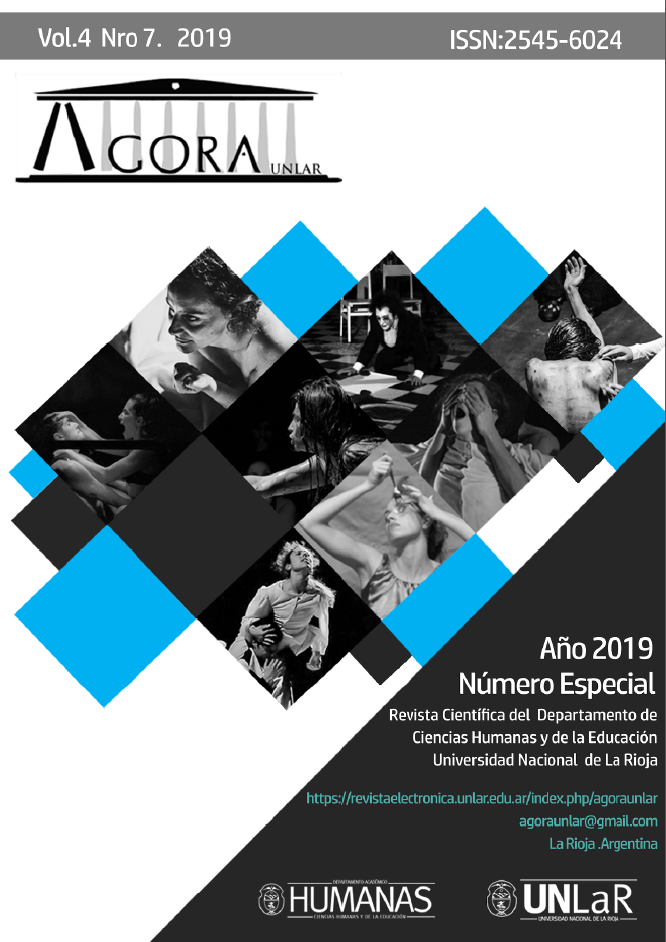CONSIDERACIONES A PARTIR DE LA OBRA RÉQUIEM PARA CUATRO LLORONES (2010) DE JULIO CONTRERAS CON RELACIÓN CON LA IDEA DE LA IMAGINERÍA FEMENINA DE LO TRÁGICO
Palabras clave:
Julio Contreras Oliva, presentación, representación, Imaginería trágica femenina, cuerpo, Danza y TeatroResumen
A partir del análisis de la obra Réquiem para cuatro llorones de JulioContreras Oliva, podemos reflexionar el modo en el que el autor/directoremprende su camino de creación desde la acción de manera intermitenteentre la presentación y la representación de sus personajes, quienesponen en evidencia el pathos que aflora de sus cuerpos en su estado másprofundo de tristeza, pasión y padecimiento. Poniéndonos en consonanciacon la revalorización del cuerpo-materia y los cambios en los modos deconcebir y organizar su noción del cuerpo en las sociedades occidentalescontemporáneas, nos proponemos realizar un breve análisis sobre lasignificación del cuerpo en la Danza y el Teatro en relación a lo que éstaobra deja traslucir. CONSIDERATIONS FROM THE WORKRÉQUIEM PARA CUATRO LLORONES (2010) BY JULIOCONTRERASIN RELATION TO THE IDEA OF THE FEMININEIMAGERY OF THE TRAGIC ABSTRACTBased on the analysis of the work Réquiem para cuatro llorones (Requiemfor Four Whiners) by Julio Contreras Oliva, we can reflect on the way in whichthe author / director embarks on his journey of creation through intermittentaction between the presentation and representation of his characters, whoreveal the pathos that emerges from their bodies in their deepest state ofsadness, passion and suffering. Putting ourselves in line with the revaluationof the body-matter and the changes in the ways of conceiving and organizingits notion of the body in contemporary western societies, we propose to makea brief analysis about the meaning of the body in dance and theater in relationto what this work shows.Key words: Julio Contreras Oliva, presentation, representation, femininetragic imagery, body, dance and theaterDescargas
Publicado
24-01-2019
Número
Sección
ARTÍCULOS DE INVESTIGACIÓN O REVISIÓN TEÓRICA





